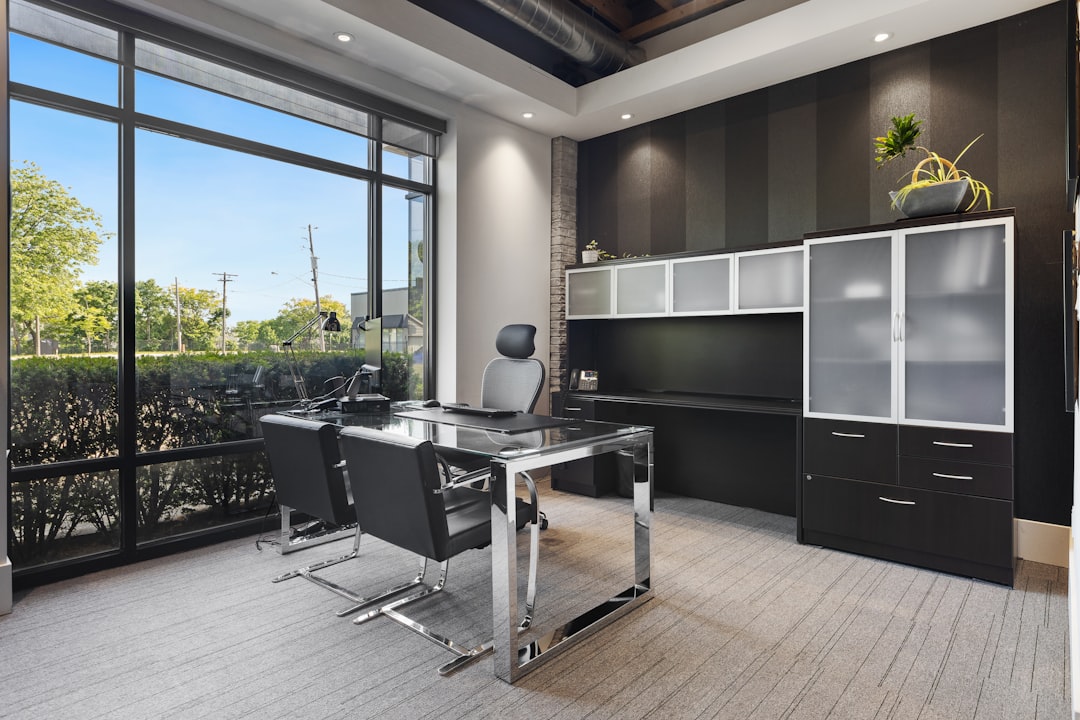

Engage prospects with a scan and streamline customer engagement with FREE QR code marketing tools by Sona – no strings attached!
Create a Free QR CodeFree consultation

No commitment

Engage prospects with a scan and streamline customer engagement with FREE QR code marketing tools by Sona – no strings attached!
Create a Free QR CodeFree consultation

No commitment
Commercial real estate firms operate in a highly competitive market where capturing qualified leads and engaging prospective clients is challenging. Missed opportunities from untracked or anonymous prospects, lost data from physical interactions, and gaps between online and offline marketing efforts often leave teams without a clear sense of who is truly engaging and why. Traditional printed materials like brochures, property signs, and direct mail remain powerful for driving initial interest, but that interest too often slips through the cracks when manual processes fail to record intent or connect it to digital outcomes.
QR codes in marketing have emerged as a strategic driver for real estate lead generation, turning every property brochure, window display, signage, or event badge into a digital touchpoint. When high-value prospects research properties but do not fill out a form, QR codes offer a fast, frictionless way to trigger deeper engagement, whether requesting information, scheduling a tour, or instantly accessing a virtual walkthrough. By allowing prospects to self-identify with a quick scan, firms reduce barriers to entry while surfacing more in-market buyers and tenants.
Integrated correctly, QR codes enable commercial real estate firms to automate data collection directly into their CRM and marketing tools, avoiding the pitfalls of missing or outdated lead records. This approach modernizes real estate marketing strategies and addresses persistent pain points such as lack of visibility into anonymous traffic and late capture of lead information, giving teams the actionable, real-time data needed to score prospects, respond faster than competitors, and nurture leads with targeted follow-up.

Capturing high-quality leads in commercial real estate is complicated by the challenge of tracking visitors who engage with physical signage or print but never fill out a form or leave a clear signal of intent. This often leads to missed high-value prospects who are not entered into your CRM, resulting in lost revenue and wasted marketing efforts. The biggest gaps typically appear after hours near for-lease signs, when prospects browse lobby displays on a weekend, or when brochures change hands across stakeholders and decision makers without any digital trail.
Modern QR code strategies allow firms to bridge the gap between physical touchpoints and digital outcomes, ensuring each inquiry is captured and actionable. By connecting scans to forms, tours, and content, every offline interaction becomes measurable, attributable, and primed for follow-up. The goal is to replace outdated analog processes with lightweight digital pathways that prospects can complete on the spot, and that teams can track in real time.
With a comprehensive QR-enabled capture process, you can eliminate guessing games about who picked up a brochure or paused at a window display. The result is faster handoffs to sales, better qualification based on scan behavior and content consumption, and a repeatable system for turning real-world interest into pipeline.

Many commercial real estate team leaders express frustration at how easily interest generated from property signs, open house flyers, or printed brochures can dissipate with no trace, resulting in a persistent lack of visibility into who is engaging and when. Prospects researching properties outside business hours rarely fill out forms in the moment, which means qualified leads often remain anonymous until it is too late. These offline-to-online blind spots are especially costly in competitive submarkets where speed to respond determines who wins the tour and ultimately the lease, as shown in real estate QR tactics.
QR codes directly address these gaps by transforming offline materials into gateways for immediate digital engagement. Scanners do not need to download an app, remember a URL, or call a number during business hours. Instead, a scan triggers an intent-rich path: previewing a virtual walkthrough, requesting a copy of the OM, or scheduling a tour in seconds. Every action is captured, timestamped, and routed to the right team with context about the property and channel.
By integrating QR codes, CRE marketers elevate day-to-day execution while creating a stronger foundation for attribution, forecasting, and revenue impact. The teams that move fastest from scan to conversation consistently capture more tours and better-fit tenants.

Commercial real estate marketers often struggle with fragmented data and disconnected customer journeys, especially as prospects engage across brochures, signage, and event materials. The right QR format closes these gaps by aligning each scan with a specific action and outcome. Selecting the proper destination and data capture method ensures your codes do more than link to a generic webpage.
For CRE, the most useful formats tend to align with the actions that indicate intent: viewing listing details, saving an agent’s contact information, requesting materials, or booking a tour. When tied to CRM automation, these formats turn casual exploration into actionable leads.
In most cases, dynamic QR codes are preferable to static ones because they offer editability, analytics, and campaign flexibility. You can update destinations as listings evolve, A/B test landing pages, and attribute scans by channel or location without reprinting materials. Platforms like Sona QR make it easy to manage these formats at scale from a single dashboard.

A recurring complaint among commercial real estate professionals is that high-intent prospects, especially those who discover for-lease signage after hours or browse print brochures, go unidentified and unpursued. Growth often depends on consistently surfacing and converting these traditionally offline leads. QR codes give you a reliable path for turning everyday assets into proactive lead capture mechanisms.
Start by analyzing where your offline audience already interacts with your brand. Then map that environment to a scan-to-action experience. Consider the information the prospect needs at that exact moment, the device they are likely using, and the follow-up that will keep the conversation moving.
Firms that operationalize these placements often discover swift gains in tour volume and shorter response times. The key is to tie every scan to a next step a broker can see, prioritize, and act on.

Slow or incomplete lead capture from events and physical assets can stall campaigns and lead to missed revenue. QR codes allow teams to construct workflows that make every point of engagement measurable, while giving prospects a low-friction path to take the next step. The most effective use cases align QR destinations with common moments in the CRE journey.
Pair each use case with specific KPIs such as scan-to-form conversion rate, time-to-first-response, and tour booking velocity. Doing so transforms QR campaigns from one-off experiments into an integrated part of portfolio marketing.
When these use cases are deployed across the portfolio, firms see a compounding effect: more first-party data, faster tour scheduling, and clearer attribution from offline interest to late-stage opportunity.
Incomplete audience data undermines remarketing and personalization, which wastes budget and weakens conversion rates. Each QR scan creates a high-fidelity intent signal with context such as location, asset type, and time of day. By deploying distinct codes for different properties and funnel stages, you can auto-segment leads and tailor your follow-up for relevance and timeliness.
Focus on distinctions that matter in commercial real estate: buyer versus tenant, local company versus out-of-market investor, and interest by asset class. Then design post-scan sequences that reflect the level of commitment implied by the action taken, such as a quick brochure download versus a tour request.
Sona QR simplifies this by turning each code into a smart entry point with built-in tagging and integrations. That means less manual work for your team and more precise remarketing that respects the prospect’s stage and interests.
Commercial real estate marketers struggle to attribute ROI across offline and online channels because the customer journey spans signs, brochures, events, websites, and paid media. QR codes act as connectors across these touchpoints, making it possible to collect real-time data and orchestrate cohesive experiences. When you know which placements and messages prompted the scan, you can fund what works and fix what does not. Learn more about offline attribution to quantify impact across channels.
Think about QR codes as the offline onramp to your digital engine. Give each code a clear CTA that aligns with the physical context, then funnel scans to destinations that progress the buyer journey. Over time, you build a dataset that reveals your strongest channels by market, property type, and audience segment.
Integrating QR engagement with your CRM, analytics, and ad platforms turns scattered interactions into a single, attributable funnel. With a centralized platform like Sona QR, you can manage codes across the portfolio, monitor performance by channel, and sync scan data into automated workflows that move prospects toward tours and negotiations.
Teams frequently encounter hurdles tracking attribution or adapting campaigns in response to shifting property status or engagement signals. A structured approach helps you launch fast, test effectively, and scale what works. The following checklist turns QR deployments into a repeatable practice that improves with every iteration.
Start small with one property or submarket, then expand. Use dynamic codes so you can iterate on destinations, CTAs, and creative without reprinting. Treat each code as a campaign with its own metrics and learnings.
Align each QR code with a clear business outcome. For CRE, strong use cases include tour scheduling for a new development, OM downloads for investors, and event check-ins for property unveilings. The more specific the use case, the easier it is to measure impact and optimize.
Static codes have fixed destinations and no analytics. Dynamic codes are trackable, editable, and ideal for most marketing use cases in real estate where listings change and optimization is ongoing. When in doubt, choose dynamic for flexibility and insight.
Design choices influence scan rates. Use sufficient contrast, adequate size, and a clear visual frame. Pair every code with a benefit-driven CTA such as Scan to book a tour or Scan to see the 3D walkthrough. Then test on real devices in the environments where the codes will live.
Choose placements based on where you commonly lose prospects. For CRE, this often includes street signage, lobby posters, direct mail, and event materials. Roll out in phases so you can learn and iterate before scaling across the portfolio. See QR advertising tips for creative ideas.
Measurement is where QR campaigns stand apart from traditional print. Use analytics to understand scan volume, conversion rates, and time-to-response. Then iterate on CTAs, destinations, and placement based on what the data shows.
Advanced QR platforms make this workflow seamless at scale, eliminating manual errors that slow campaign performance. Over time, your QR practice becomes a competitive advantage: faster feedback loops, sharper targeting, and consistently higher-quality lead capture. Start creating QR codes for free.
Commercial real estate firms often operate without full visibility into campaign attribution. That opacity can mask which channels are working, conceal upsell opportunities, and cause teams to overinvest in placements that look good but do not move the needle. QR codes, when instrumented properly, create a measurable chain from scan to booked tour to signed deal.
Tracking should go beyond raw scan counts. You need to understand who scanned, what they did next, and how quickly sales responded. Layer in context such as location and time of day to inform outreach and staffing decisions. For instance, a cluster of after-hours scans near a specific property may justify extended coverage or a targeted remarketing burst.
With Sona QR and Sona.com, you can go further by resolving anonymous scans to known leads through account identification and attributing multi-touch journeys across print, web, and events. Sona QR captures the real-world engagement. Sona.com connects those interactions to pipeline and revenue, giving you a full picture of progression from first scan to lease or sale.
Adopting QR codes is the first step; maximizing their value requires a focus on operational excellence, staff enablement, and ongoing optimization. The most successful CRE teams align QR campaigns with broker workflows and maintain a test-and-learn culture that refines placement, messaging, and design each quarter.
Start with a few high-visibility assets, then scale as you prove ROI. Codify best practices in a playbook so every property team can replicate what works. Equip brokers with talking points and micro-CMOs with templates that shorten time to deployment.
Leading firms frequently report double-digit improvements in inquiry volume and tour conversion when they adopt these practices. The compounding effect over a portfolio cycle can be substantial.
As firms scale QR code deployment, choosing the right platform becomes a strategic decision. The ideal solution integrates with your existing systems, supports advanced workflows, and meets your security and compliance requirements. Without a robust foundation, you risk fragmented data, limited attribution, and costly rework.
Focus your evaluation on four areas: integrations, analytics depth, security, and workflow flexibility. CRE deals are complex, and your QR infrastructure should handle nuanced use cases such as multi-property routing, portfolio rollups, and role-based access for internal and external stakeholders.
A comparative approach helps you avoid technical debt and choose a partner that supports both current campaigns and future innovations. Sona QR is designed with these enterprise needs in mind, providing centralized management, robust analytics, and integrations that map to the commercial real estate stack.
The business case for QR-driven marketing in commercial real estate becomes clear when measured against solved pain points: fewer anonymous interactions, faster response times, and clearer attribution. Firms that operationalize QR codes across signage, print, and events often see lifts in both inquiry volume and lead quality, with marketing and sales finally aligned around a shared dataset.
Consider representative outcomes from firms that integrated QR-to-CRM journeys. Teams have reported up to 40 percent more qualified inbound inquiries from QR-enabled signage compared to phone-only callouts. Multi-market portfolios cite significant reductions in print costs by switching to dynamically updated codes while improving allocation of budget to high-performing placements. One national developer leveraged QR-powered campaigns to increase property-to-tour conversion rates by a meaningful margin within a single quarter by connecting scans to same-day scheduling and automated reminders. Explore more real estate QR uses for inspiration.
Looking ahead, QR codes will remain central to modern CRE marketing as virtual tours, predictive scoring, and automated retargeting become standard. Expect deeper integration with digital twins and augmented reality, more advanced identity resolution to link scans with web sessions and email engagement, and stronger feedback loops between analytics and orchestration. The firms that build this capability now will be positioned to deliver more personalized experiences, move faster on buyer intent, and protect margin in a competitive market.
QR codes have become a foundational innovation for commercial real estate firms, closing data gaps, overcoming manual lead capture hurdles, and ensuring every offline engagement translates into actionable insight. By linking physical marketing assets directly to measurable digital journeys, firms gain higher inquiry and conversion rates, along with a clearer understanding of which assets, channels, and messages drive deal flow.
Modern QR solutions offer the agility and integration necessary for property marketers to unify touchpoints, automate nurture, and unlock growth as market dynamics shift. As offline and online experiences blend, firms investing in QR-powered lead generation and analytics are best positioned to act on buyer intent, outpace competitors in timely follow-up, and capture sustainable value from every prospect interaction.
QR codes have transformed commercial real estate firms from relying on traditional lead capture methods to leveraging dynamic, measurable growth channels. Whether it’s acquiring qualified leads, enhancing client interactions, or streamlining property tours and information sharing, QR codes replace cumbersome processes with instant, mobile-friendly engagement and deliver real-time data to turn every marketing asset into a powerful conversion tool. Imagine knowing exactly which listings or brochures generate the most interest—and acting on that insight immediately.
With Sona QR, commercial real estate professionals can create dynamic, trackable QR codes in seconds, update campaigns instantly without costly reprints, and link every scan directly to lead generation metrics and revenue outcomes. No more missed opportunities or guesswork—just smarter, more effective marketing that drives tangible results. Start for free with Sona QR today and turn every scan into a conversation, a qualified lead, or a closed deal.
Commercial real estate firms offer services including property marketing, lead generation, tour scheduling, event lead capture, and managing client engagement through both offline and online channels.
Look for firms that integrate technology like QR codes with CRM systems, demonstrate strong lead capture and follow-up processes, and provide measurable marketing results across multiple channels.
QR codes help capture qualified leads by connecting physical marketing materials to trackable digital touchpoints, enabling instant inquiries, virtual tours, automated data collection, and improving follow-up speed and lead qualification.
They use technologies such as dynamic QR codes integrated with CRM and marketing automation to track offline engagement, automate lead scoring and routing, provide virtual tours, and gain actionable analytics for optimizing campaigns.
Effective strategies include deploying unique QR codes across signage, brochures, direct mail, and events; linking scans to specific actions like tour scheduling or document requests; integrating data into CRMs; and continuously tracking and optimizing campaigns based on analytics.
Use Sona QR's trackable codes to improve customer acquisition and engagement today.
Create Your FREE Trackable QR Code in SecondsJoin results-focused teams combining Sona Platform automation with advanced Google Ads strategies to scale lead generation

Connect your existing CRM

Free Account Enrichment

No setup fees
No commitment required

Free consultation

Get a custom Google Ads roadmap for your business






Launch campaigns that generate qualified leads in 30 days or less.
